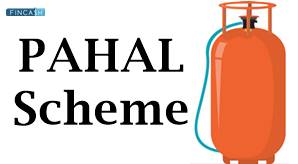NABARD Scheme
]The National Bank for Agriculture and Rural Development (NABARD) is an Indian financial organisation that specialises in the management and provision of loans and other financial assistance to India's agricultural and rural sectors.

Its value in providing help to meet changing demands in agrarian infrastructure was strongly felt when it was established in 1982, during the early years of the country's technological transformation. NABARD manages national projects and contributes to rural infrastructure development across the country.
It has a three-pronged approach for the country's agricultural sector, which involves finance, development, and supervision. This article includes all the details regarding NABARD Yojana, NABARD Subsidy, its benefits, and its features.
Types of Refinancing under NABARD
Refinancing under NABARD can be divided into two key types, as follows:
Short-term Refinancing
The granting of credit and loans for crop production is referred to as short-term refinancing. This guarantees the country's food production stability while also meeting the needs of cash crops for export.
Long-term Refinancing
The supply of loans for the growth of agricultural and farm-related enterprises in rural areas is referred to as long-term refinancing. Such a loan can be taken out for a minimum of 18 months and a maximum of 5 years. Aside from them, there are additional options for loan provision, such as funds and plans. The following are a few of them:
Rural Infrastructure Development Fund (RIDF): Recognising a gap in lending to the priority sector, the RBI created this fund to improve rural infrastructure.
Long term Irrigation Fund (LTIF): Through the consolidation of an amount of Rs. 22000 crores, this fund was established to support 99 irrigation projects. The Pollavam National Project in Andhra Pradesh and the North Now I Reservoir Project in Jharkhand and Bihar have been added.
Pradhan Mantri Awas Yojana- Grameen (PMAY-G): A total of Rs. 9000 crores were pooled under this fund to construct pucca houses with all basic amenities in rural areas by the year 2022.
NABARD Infrastructure Development Assistance (NIDA): This unique programme provides financing to financially strong and stable state-owned businesses and institutions.
Warehouse Development Fund: As its name suggests, this fund was established to promote the development, construction, and maintenance of a strong warehouse infrastructure in the country.
Direct Lending to Cooperative Banks: NABARD has sanctioned a loan of Rs. 4849 crores to 58 Cooperative Commercial Banks (CCBs) and four State Cooperative Banks (StCbs) operating in 14 states throughout the country.
Credit Facilities to Marketing Federations: Farm activities and agricultural produce are marketed through this Facility, which helps strengthen and support marketing federations and cooperatives.
Credit to Producer Organisations along with Primary Agriculture Societies (PACS): NABARD established the Producer Organisations Development Fund (PODF) to provide financial assistance to Producer Organisations (Pos') and Primary Agriculture Societies (PACS). This organisation was created to serve as a multi-service centre.
Talk to our investment specialist
Interest Rates of NABARD Loans 2025
NABARD promotes its different initiatives through a network of banks and other credit-lending financial institutions around the country.
The interest rates for NABARD loans are shown in the table below. However, these are tentative and subject to change. Furthermore, under these circumstances, the addition of GST rates is also relevant.
| Types | Interest Rates |
|---|---|
| Short Term refinance assistance | 4.50% onwards |
| Long Term refinance assistance | 8.50% onwards |
| Regional Rural Banks (RRBs) | 8.35% onwards |
| State Cooperative Banks (StCBs) | 8.35% onwards |
| State Cooperative Agriculture and Rural Development Banks (SCARDBs) | 8.35% onwards |
Features of the NABARD Scheme
Apart from the agricultural sector, this scheme is also responsible for overall development in rural areas in Small Scale Industries (SSI), cottage industries, and so on. As a result, it provides comprehensive assistance not just in agriculture but also in the rural Economy. The following are the main characteristics of NABARD schemes:
- Infrastructure development in undeveloped areas
- Finding ways to refinance projects and giving appropriate assistance
- Creating credit plans at the district level
- Handicraft artisans' training and promotion
- Putting the government's growth plans into action
- A new project for the rural communities' development
- Overlooking the acts and functions of cooperative banks and Regional Rural Banks (RRBs)
- Guiding the banking sector to meet their goals
NABARD for Farming
NABARD also provides a variety of broad, general, and targeted initiatives to help the country's farm Industry thrive. Various subsidies packages are also included. The following are a few of them:
NABARD Dairy Loan: Dairy Entrepreneurship Development Scheme
This programme gives help to interested entrepreneurs who want to start small dairy farms and other related infrastructure. There is a slew of additional critical goals that this programme aims to achieve to help this cause, such as:
- Encourage the upbringing of heifer cows and the preservation of healthy breeding stock
- Organising and establishing modern-day farms for the production of organic farm milk
- Upgrading the necessary technologies to manage milk production on a commercial scale
- Creating self-employment to improve the lives of workers
- Improving the infrastructure for the unorganised sector
- Developing an Infrastructure for agricultural marketing
- Bringing central scheme for agri-clinics and central agribusinesses
NABARD Schemes for Farmer Producer Company: Credit Linked Capital Subsidy Scheme
This is one of NABARD's off-the-farm programmes that address the need for technological advancement. In 2000, the Indian government launched the Credit Linked Capital Subsidy Scheme (CLCSS).
This was introduced to address the demand for Micro, Small, and Medium-sized Enterprises (MSMEs) to upgrade their technology. Furthermore, it was utilised to further enhance technology for Small-Scale Industries (SSIs) in the sub-sectors of defined items.
Under the Atmanirbhar Bharat Program, NABARD will also provide significant financial assistance worth Rs.30,000 crores as an additional emergency working capital. The following are some major takeaways from this scheme:
- Around 3000 crore farmers across the country will benefit
- Meet post-harvest (Rabi) and current (Kharif) requirements in May and June
- The principal providers of loans will be regional and rural cooperative banks
Agriculture Land Purchase Loan NABARD
Farmers can get financial help to buy, develop, and cultivate agricultural Land. It is a term loan based on the size of the parcel of land to be purchased, its value, and the development costs.
For loans up to Rs. 50,000, no margin is required. If the loan is for a more significant sum, a minimum of 10% margin will be required. There are options for the tenure ranging from 7 to 12 years in half-yearly or yearly instalments, with a maximum moratorium period of 24 months.
Eligibility to Gain NABARD Scheme Benefits
Here are the eligibility criteria that you need to meet to apply for this scheme:
- Small and marginal farmers are defined as those who hold a maximum of non-irrigated or irrigated land as defined by NABARD for each of the country's agro-climatic regions
- Tenant farmers or sharecroppers
NABARD Schemes for Goat Farming
The primary objective of NABARD Subsidy for Goat Farming 2020 is to assist small and medium-Range farmers in enhancing the overall livestock production, which would eventually result in furthermore job possibilities.
NABARD works with several financial institutions to provide goat farming loans, such as.
- Banks that deal with commerce
- Banks in Rural Areas
- Rural Development Banks and State Cooperative Agriculture Banks
- Cooperative State Banks
- Banks in Cities
People in the SC and ST category who are poor will receive a 33% subsidy on NABARD's scheme's goat farming. Other people falling into the general and OBC categories will get a 25% subsidy of up to Rs. 2.5 lakh.
NABARD Cold Storage Subsidy Scheme
NABARD was given a grant of Rs.5000 crores in the 2014-15 budget to develop infrastructure for agricultural commodity storage.
The intention is to use the funds to provide loans to the public and private sectors to build warehouses, cold storage facilities, and other cold-chain infrastructure. Furthermore, the warehouse infrastructure fund is used to fulfil the growing demand for scientific storage capacity for agricultural goods across the country, particularly in the Eastern and North-Eastern states and in states with food grain deficits.
Conclusion
While already a lot has been accomplished, there is still a long way to go before the road to full rehabilitation can be reached. As a result, many programmes and policies must be re-energised. Thus, under the recently announced Atmanirbhar Bharat programme or Self-Reliant India Scheme, the Government of India, through NABARD, would provide substantial financial assistance to the agricultural sector, as described above.
All efforts have been made to ensure the information provided here is accurate. However, no guarantees are made regarding correctness of data. Please verify with scheme information document before making any investment.












